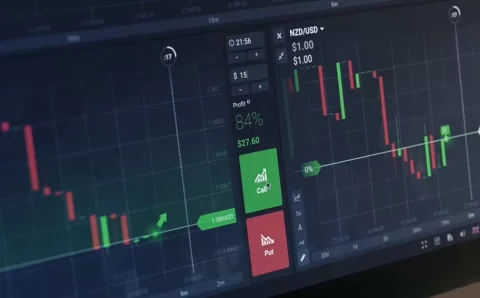[ad_1]
Goldman Sachs Group Inc. is set to plow at least $30 billion into Asian alternative assets over the next five years after revamping its operations and starting an aggressive campaign to raise outside funds in a bid to overtake investment giants such as KKR & Co. and Blackstone Inc.
In Asia, that means doubling investments to about $60 billion, betting on technology startups, real estate, consumer and renewable energy, said Stephanie Hui, the bank’s co-head of alternative investing in the region.
The challenge for Hui is deploying the money at a time when cashed-up rivals are bidding up valuations. Private equity firms must also navigate a Chinese regime increasingly suspicious of U.S. investments in its most-sensitive sectors, closing off once attractive targets, as well as a broad crackdown on large parts of its private sector.
Since 2003, Goldman has invested $6.3 billion in Asian growth companies alone, generating a realized gross return of 35% as of June, according to Hui. The top quartile of funds in Asia had a net return of a bit more than 20%, according to a Bain & Co. report.
Globally, the firm has already pulled in more than half of the $150 billion it’s targeting to raise for the alternatives business under a plan outlined by Chief Executive Office David Solomon in 2019. The inflows have helped swell assets under management to $416 billion, topping firms such as Carlyle Group Inc., but lagging behind KKR and Blackstone.
In an interview in Hong Kong last month, Hui offered a rare insight into how Goldman’s alternative investments are decided and what changes the team is making to navigate the political tensions that have stung investors in China.
The past year has brought a blizzard of regulation in Asia’s largest economy. President Xi Jinping’s crackdown on the private sector and push for more “common prosperity” has raised risks and put dominant firms under closer scrutiny, forcing Goldman to adjust its approach.
Hui’s team is now looking at second-tier firms with leading technology with an ambition to be sector leaders, rather than focusing on the most dominant. On top of investments in the latest enterprise software and financial services technology, it is also betting on consumer and health-care firms.
Helping Hui sift through the opportunities is a more integrated team after Solomon brought under one umbrella groups focused on private equity, credit, real estate and financial technology investing. The overhaul also included folding in the principal investment and special situations teams.
Globally, executives are now pushing to make the 3,000 investment bankers, 700 research analysts and 800 wealth managers work better on deal referrals and tending to clients. Goldman has about 160 investment professionals across private equity, credit and real estate in Asia, and may increase that number by as much as 10% next year, said Takashi Murata, who co-heads the group with Hui and is one of the founding members of the firm’s Asian special situations group. That’s more than Carlyle’s about 100 and also tops KKR’s headcount of about 130, according to people familiar.
The reach “sets us apart,” said Hui, a Harvard-educated managing director who has spent 24 years at the bank. “We simply have more people, more feet on the ground, to touch, feel and understand what’s happening in the market.”
Less jostling
The changes have also led to more coordination and also less jostling between the firm’s different dealmakers, according to Hui.
In the past, there have even been some instances where Hui only found out about investments the firm had made from news reports. After the revamp, “it’s just one group making decisions and that clarity is extremely helpful,” she said.
Hui recently tapped Goldman’s 9,000-strong engineering group to assess an investment in a Chinese technology company. A team in Hong Kong specializing in robotics and artificial intelligence ran product tests on both the company and its competitors. One engineer then helped make the final pitch to the global investment committee, which green-lit the investment of tens of millions of dollars.
“We have many instances where we get calls from our engineers saying ‘this is good technology or software’ and we should take a look at it since it could be the next big fintech company,” she said.
Goldman’s alternatives group typically invests $50 million to $100 million equity in startups, building significant minority stakes via multiple rounds, with a threshold of $150 million.
Deals
Among standout deals was a recent sale of holdings in South Korea’s Woowa Brothers, which generated an almost 30-fold return. Chinese trans-catheter heart valve producer Venus MedTech made it almost eight times the money.
Instead of taking tips from the engineering deck, the Woowa investment followed the more traditional route with a recommendation by Goldman’s investment bankers. On the flip side, the investing team introduced Venus Medtech to the bankers, who arranged the company’s Hong Kong initial public offering in December 2019 as well as a follow-on share sale in 2020.
Still, one key Goldman investment was entangled by China’s recent crackdown on after-school tutoring. The bank was among a group of investors including Primavera Capital to put $350 million into education technology startup Zuoyebang in 2018. The company was considering U.S. initial public offering to raise $500 million, but that is now largely mothballed.
In real estate, Goldman has deployed $7.7 billion of its own capital in more than 100 deals, generating a 26% return since 2012, according to Murata. It’s also targeting credit investments, such as mezzanine debt, senior loans and structured credit in Asia, he said.
The firm plans to build a bigger presence in real estate in developing markets such as China, Korea and India, according to Murata. To get closer to the ground in Korea, it recently moved the Hong Kong-based team to Seoul.
Fundraising
Goldman and its employees have invested heavily in its alternative funds over the years, contributing more than $70 billion to be the two largest investors. They make up above 20% of the investor base in some of the most established funds, said industry executive familiar with the matter, who asked not to be named discussing internal figures. That is far higher than the 8% to 10% at other global funds, the people said.
Under Solomon, the firm has pledged to turbo charge its capital raising activities, driven by new planned funds in alternative investments. To this end, Goldman has built its first-ever fundraising team in the region, moving Stuart Wrigley from Dubai to become head of alternatives capital markets & strategy. The bank has added three managing directors in the Asia alternative business since 2020, including Rajat Sood, who joined from General Atlantic in Mumbai last year. This year it relocated Nikhil Reddy from New York and Thomas Hilger from London, for real estate and private credit, respectively.
The firm’s network is generating deals, Hui said, with as much as half of the growth in investments in Asia referred internally during peak years.
[ad_2]
Source link





